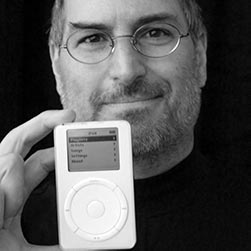When people as me what I do for a living, I could answer via one of two routes. I could be factual and respond with,
“I am an Information Architect with 22 years specializing designing Web Standards-based, accessible, responsive websites that utilize MySQL + LAMP, and are based on Agile, design thinking, additionally having over two decades of experience steeped in brand awareness, brand loyalty, persona development, and customer acquisition for Fortune 500 corporations.”
All true statements, but you’re already asleep. Or I can use my Personal Elevator Pitch and say,
“I make brands easier to remember and websites easier to use.”
Better yes, but why? It’s not just being brief that makes it work. While that sentence seems deceptively simple, it took me weeks to perfect it. And we’ll get to that in a minute.
- What is an elevator pitch?
- An Elevator Pitch is a brief, factual statement that says what you do (or your firm does). The purpose of an elevator pitch is to secure interest in the hopes of getting business. You want the listener to stop and say, “Wait, tell me more,” or, “Hey, I might need that.”
When I taught at CCS, the students were told their elevator pitches, “had to be given in under 20 minutes.” I disagree. Too long. I don’t know about you, but I’ve never been on an elevator ride that took 20 minutes.
A solid elevator pitch broadly explains what you do in one sentence, and should entice the listener to say, “Wait, tell me more.” But how do you do that? Most companies I consult with on their branding tell me, “Impossible! We have over 13 services and 60,000 SKUs. There’s no way to get all of them in one sentence.” That’s not the idea here.
Ever asked someone how they are doing, expecting a “Fine. You?” and instead of getting a detailed breakdown of their past 12 months of personal Hell? If we don’t like that in person, why would we put up with it in a business scenario? Same result: frustration and boredom.
How to write your Elevator Pitch
- Include 1–3 solutions. If you have four or more, find a category that encompasses them. Otherwise, you are overloading the listener’s head with unnecessary information. I prefer two (I do this, and I do that). In reality, I do much more, but I just want to get some interest at this point.
- No more than one sentence.
- Avoid jargon. You probably think, “I sell a Chrome extension but everyone knows what Chrome extensions are,” and you’d be wrong. Most people type entire URLs into Google and think browsers and the Internet are the same thing. Never assume prior knowledge in your pitch, and never make your listener feel stupid.
- Be concise. For example, “24/7 Managed IT,” is easier to digest than, “We can help you get the dependable, Managed IT help you need, 24 hours a day, seven days a week.” Nothing wrong with that second one, but the shorter the better, in my experience.
- Solve the customer’s problem. The listener needs to see you are solving a problem they have, filling a gap, or providing a solution. In the case of my pitch, I am showing them that I will make their brand easier to remember. Well, who wouldn’t want that? And secondly, I make websites easier to use. Another winner. Everyone wants their website to be easy to use. Done.
Examples of great Elevator Pitches

When he presented the iPod for the first time, Steve Jobs said, “I want to carry 1,000 songs in my pocket.”

When he pitched the movie Alien, director Ridley Scott allegedly said, “It’s a cross between Star Wars and Jaws.”

When he pitched the Bill and Melinda Gates Foundation, Liquidia CEO Joe De Simone said, “We are using the manufacturing techniques of the computer industry to make better vaccines.”
Featured photo by Harsh Chauhan on Unsplash
